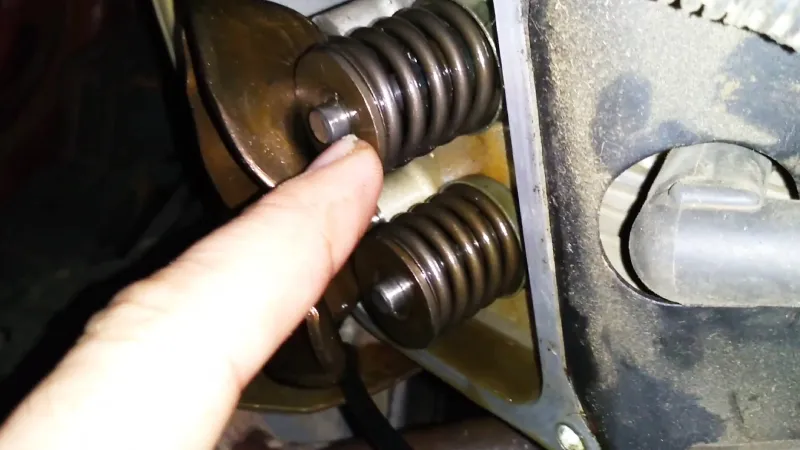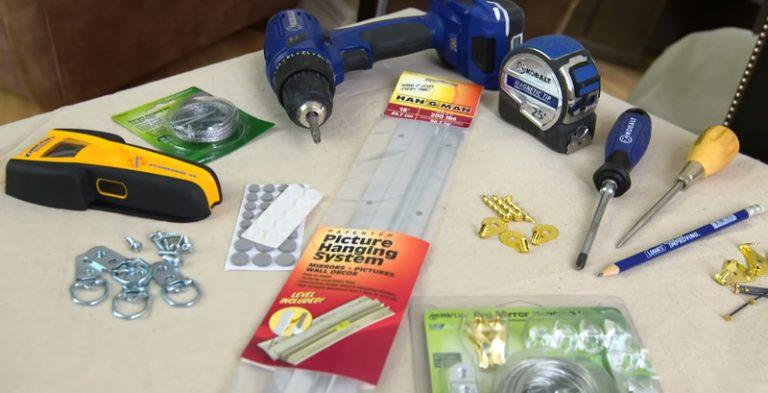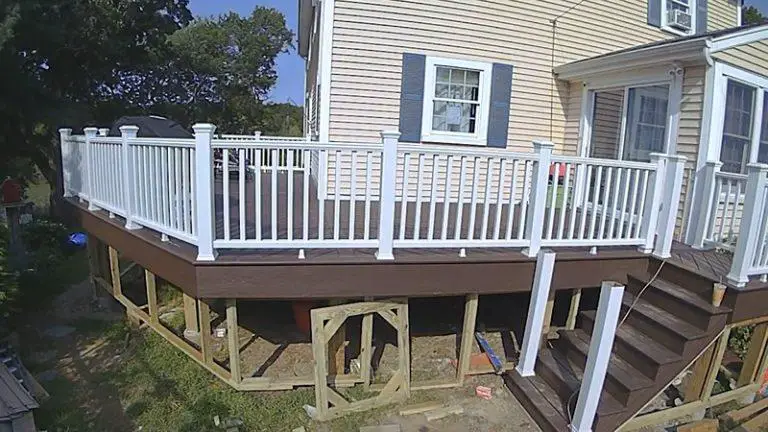Kohler Command Sp 27 Valve Adjustment

The Kohler Command SP 27 is a powerful and reliable engine commonly used in lawn mowers and other outdoor power equipment. One of the unique features of this engine is its hydraulic lifters, which maintain proper clearance between the valve stems and rocker arms without the need for manual adjustments.
This helps to ensure that the valves are functioning properly, which is critical for the overall performance of the engine.
Proper valve function is essential for the engine to operate efficiently and effectively. If the valves are not functioning correctly, it can lead to problems such as fouled spark plugs, burning oil, and even cylinder failure. It is important to address any issues with the valves in a timely manner to prevent further damage to the engine.
You'll Learn About
Kohler Command Sp 27 Valve Adjustment
The Kohler Command SP 27 engine is equipped with hydraulic lifters, which means that there is no need for valve adjustments. The hydraulic pressure maintains proper clearance between the valve stems and rocker arms, eliminating the need for periodic adjustments.
If you are experiencing problems with the valves on your Kohler Command SP 27 engine, it is possible that the lifters have collapsed or the valves are stuck open. This could be caused by a lack of oil or a malfunctioning oil pump, or it could be the result of running old gasoline that has left a build-up of shellac on the valve stems.
If you are having issues with the valves on your Kohler Command SP 27 engine, it is recommended that you seek the help of a qualified mechanic to diagnose and repair the problem.
Symptoms of Valve Problems
Symtops of valve problems include fouled spark plugs, bruning oil, black oil, cylinder failure.
Fouled Spark Plugs
Fouled spark plugs are a common symptom of valve problems in the Kohler Command SP 27 engine. If the valves are not sealing properly, it can cause an excess of fuel to enter the combustion chamber, leading to the spark plugs becoming coated in fuel deposits. This can interfere with the spark plugs’ ability to ignite the fuel-air mixture, resulting in engine misfires and reduced performance.
Burning Oil
If you notice that your Kohler Command SP 27 engine is burning oil, it could be a sign of valve problems. When the valves are not sealing correctly, it can allow oil to leak into the combustion chamber, where it is burned along with the fuel. This can result in increased oil consumption and a decrease in engine performance.
Black Oil
If the oil in your Kohler Command SP 27 engine appears black and dirty, it could be another indication of valve problems. When the valves are not sealing properly, it can allow combustion gases to leak into the crankcase, contaminating the oil. This can lead to a decrease in oil quality and a reduction in the engine’s overall performance.
Cylinder Failure
If one of the cylinders in your Kohler Command SP 27 engine fails, it could be a sign of valve problems. If the valves are not functioning correctly, it can cause a lack of proper airflow into and out of the cylinder, leading to a loss of power and eventually cylinder failure.
It is important to note that these symptoms can have other causes as well, and it is always recommended to consult with a qualified mechanic to properly diagnose and fix any issues with your engine.
Causes of Valve Problems
Lifters Collapsing or Valves Stuck Open
The hydraulic lifters in the Kohler Command SP 27 engine are responsible for maintaining proper clearance between the valve stems and rocker arms. If the lifters collapse or the valves become stuck open, it can cause a variety of problems such as fouled spark plugs, burning oil, and cylinder failure.
This can be caused by a lack of oil or a malfunctioning oil pump, which can result in insufficient hydraulic pressure to maintain proper valve function.
Build-up of Shellac on Valve Stems From Old Gasoline
Another potential cause of valve problems in the Kohler Command SP 27 engine is a build-up of shellac on the valve stems. Shellac is a sticky, resinous substance that can form on the valve stems when the engine is run on old or stale gasoline.
This can cause the valves to stick open or closed, leading to problems such as fouled spark plugs and reduced engine performance. To prevent this issue, it is important to use fresh, high-quality gasoline and to avoid letting the fuel sit in the tank for extended periods of time.
Again, it is important to note that these are just a few possible causes of valve problems in the Kohler Command SP 27 engine, and it is always recommended to consult with a qualified mechanic to properly diagnose and fix any issues with your engine.
How to Diagnose and Fix Valve Problems
It is generally not recommended to attempt to diagnose and fix valve problems on your own, as it can be a complex and time-consuming process that requires specialized knowledge and tools. It is always recommended to seek the help of a qualified mechanic to ensure that the work is done correctly and to prevent further damage to the engine.
However, if you are determined to try and fix the valve problems on your own, here is a general outline of the steps and tools you will need to follow:
Gather the Necessary Tools
Depending on the specific issue, you will need a variety of tools to diagnose and fix the valve problems. Some of the tools you may need include a compression tester, a leak-down tester, a feeler gauge, a torque wrench, and various sockets and wrenches.
Remove the Valve Cover
To access the valves and lifters, you will need to remove the valve cover. This typically involves removing a few bolts and lifting the cover off of the engine. Be sure to keep track of any gaskets or seals that may come off with the cover, as they will need to be replaced.
Test the Valves and Lifters
Once the valve cover is removed, you can use a compression tester or a leak-down tester to test the valves and lifters. This will help you to determine if the issue is with the valves, the lifters, or both.
Repair or Replace Faulty Components
Depending on the results of your tests, you may need to repair or replace faulty components such as the valves, lifters, or valve springs. This will typically involve removing the faulty component and replacing it with a new one. Be sure to follow the manufacturer’s instructions and use the proper torque when tightening bolts and fasteners.
Reassemble the Engine
Once you have repaired or replaced any faulty components, you can begin the process of reassembling the engine. This will involve replacing the valve cover and any gaskets or seals that were removed earlier, as well as any other components that you may have removed during the repair process. Be sure to follow the manufacturer’s instructions and use the proper torque when tightening bolts and fasteners.
Test the Engine
Once you have reassembled the engine, you will need to test it to ensure that the repairs have been successful. This typically involves starting the engine and running it for a short period of time to check for any issues. If you experience any problems, you may need to go back and further diagnose and fix the issue.
Again, it is important to note that diagnosing and fixing valve problems can be a complex and time-consuming process, and it is always recommended to seek the help of a qualified mechanic to ensure that the work is done correctly. Attempting to diagnose and fix valve problems on your own can be risky and may result in further damage to the engine if not done properly.
When to Repair or Replace Faulty Lifters or Valves?
Once the cause of the valve problems has been identified, the mechanic will be able to recommend the appropriate repairs or replacements. This may include repairing or replacing faulty hydraulic lifters, repairing or replacing faulty valves, or replacing the valve springs.
It is important to follow the recommendations of the mechanic to ensure that the issue is properly addressed and to prevent further damage to the engine.
More Tips to Rplace Faulty Valves
Here are a few additional tips to keep in mind when dealing with valve problems in the Kohler Command SP 27 engine:
- Follow the manufacturer’s recommendations: It is always important to follow the manufacturer’s recommendations when working on your engine. This includes using the proper tools and techniques, as well as adhering to any specific guidelines or procedures outlined in the owner’s manual or service manual.
- Use high-quality replacement parts: When repairing or replacing faulty components, it is important to use high-quality replacement parts. Using low-quality or counterfeit parts can lead to further problems down the road and may not be covered under the manufacturer’s warranty.
- Keep the engine clean: It is important to keep the engine clean and free of dirt, debris, and oil build-up. This can help to prevent issues such as fouled spark plugs and reduced engine performance.
- Follow proper maintenance procedures: Proper maintenance is crucial for the overall health and performance of your engine. This includes regularly checking and changing the oil, using high-quality gasoline, and following the manufacturer’s recommended maintenance schedule.
- Consult with a qualified mechanic: If you are experiencing problems with your engine and are unsure of how to proceed, it is always a good idea to consult with a qualified mechanic. A mechanic will have the knowledge and expertise to accurately diagnose and fix any issues you may be experiencing.
Final Words
In conclusion, the proper functioning of the valves in the Kohler Command SP 27 engine is essential for the overall performance and efficiency of the engine. If you are experiencing problems with the valves, it is important to seek the help of a qualified mechanic to properly diagnose and fix the issue.
A mechanic will have the knowledge and tools necessary to accurately diagnose the cause of the problem and recommend the appropriate course of action.
Whether it involves repairing or replacing faulty lifters or valves, it is important to follow the recommendations of the mechanic to ensure that the issue is properly addressed and to prevent further damage to the engine.
Remember, attempting to diagnose and fix valve problems on your own can be risky and may result in further damage to the engine if not done properly.






